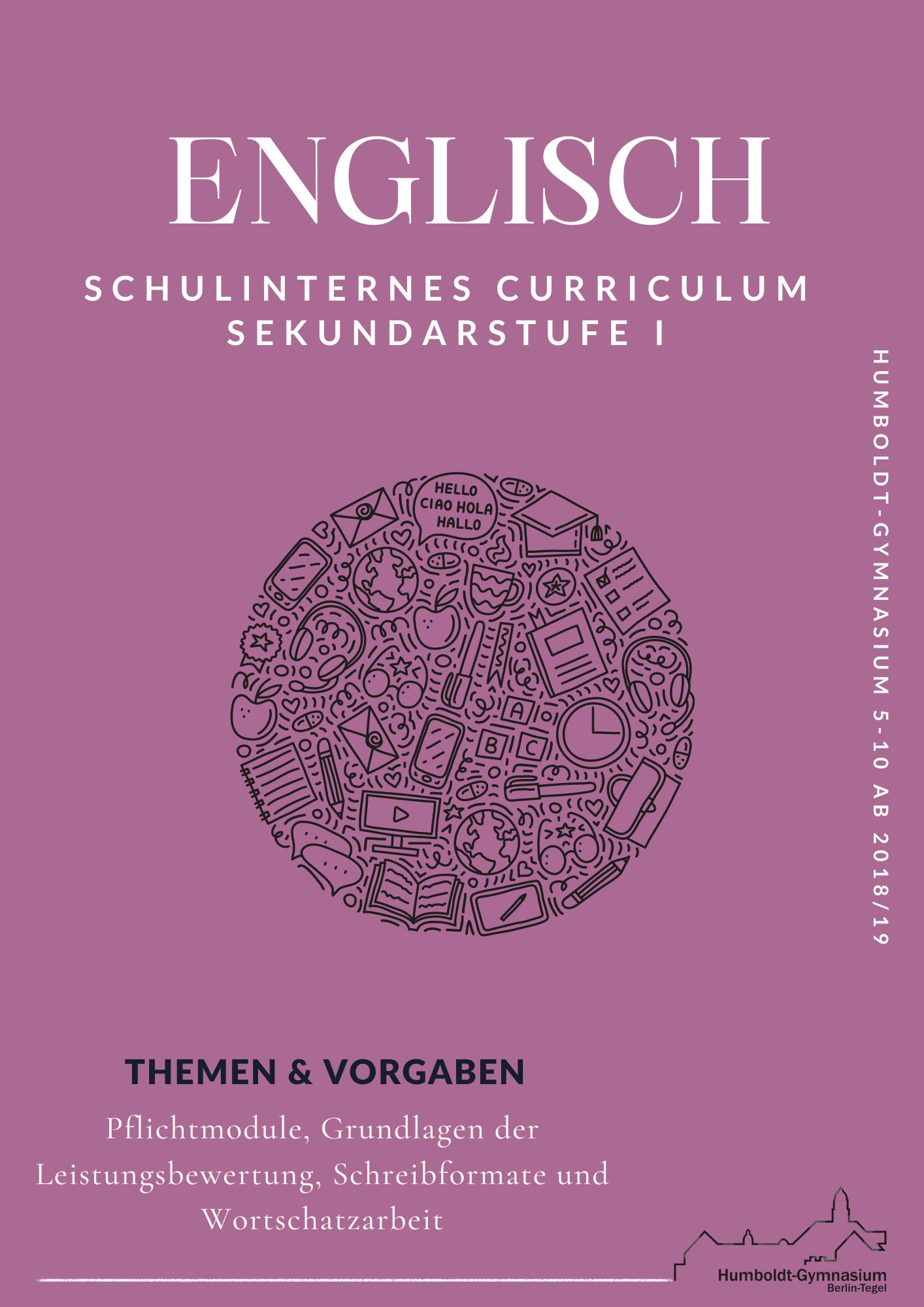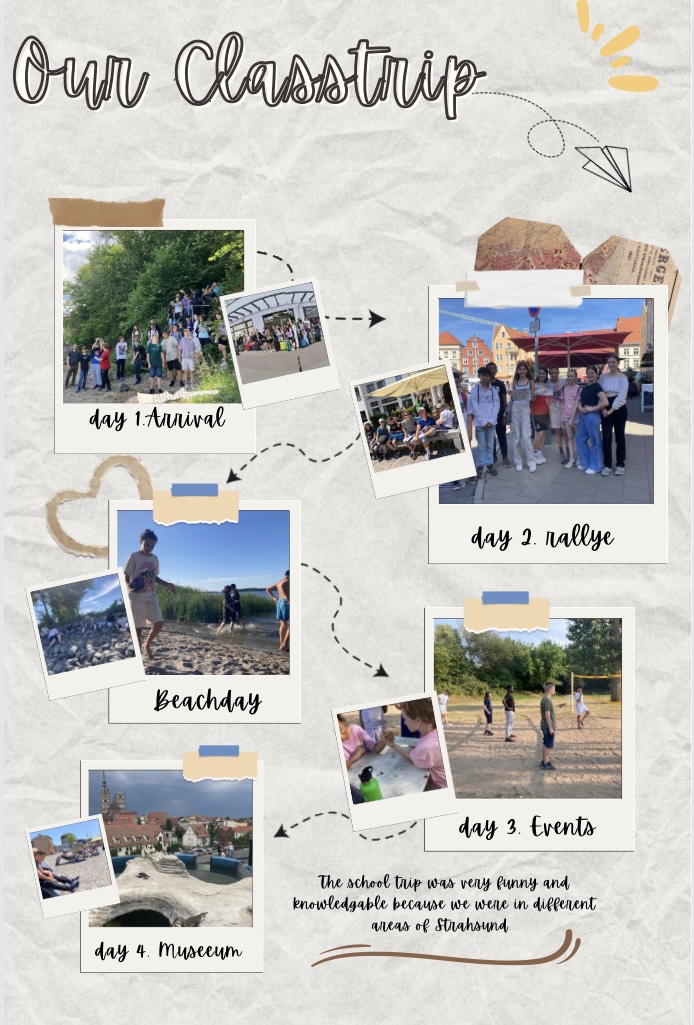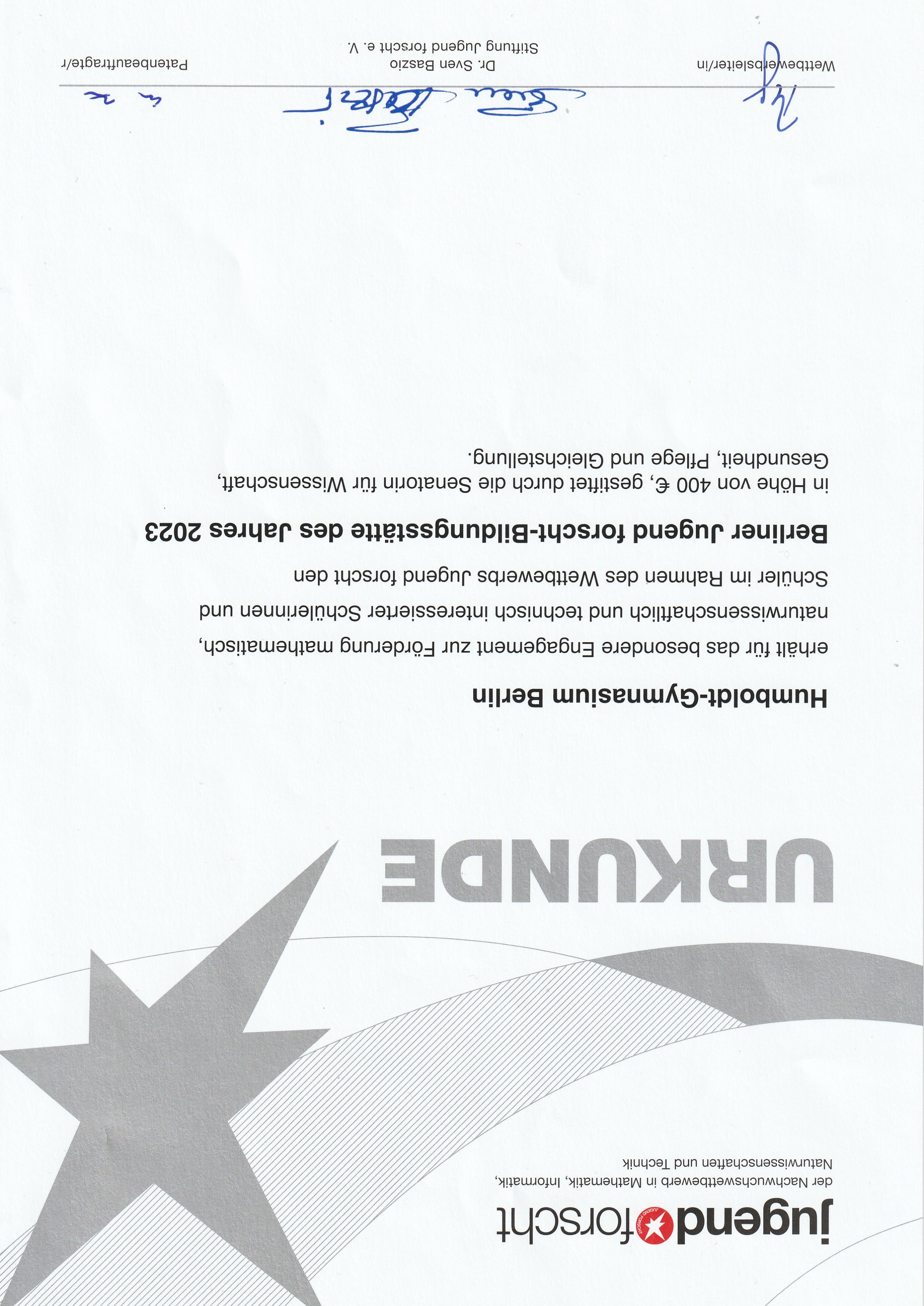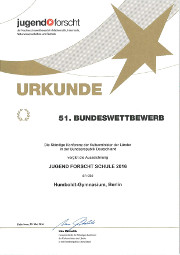The opposition’s First Opening Speech on Doping in Sport: “We should permit the use of performance enhancing drugs in sport”
NO!
Lara Kuehne: Today we are here to talk about why PED’s should not be permitted in sports. First I will talk about the serious health damages that PED’s do, then I’ll go on talking about the world anti-doping Agency, lastly I’ll talk a little about unfair play and the joy in playing and watching sports.
Sure performance-enhancing drugs are great; they allow us to strengthen our muscles, bones and tendons, enabling us to train harder, longer and with less pain. But these are only the short-term effects.
In the long term, they don’t only damage your physical health, but also your mental health. There are a lot of different drugs athletes use these days, but the three main ones that I am going to talk about include: Anabolic Agents, Stimulants and Narcotic Analgesics.
Anabolic agents (like Steroids) help build muscle faster, so this drug is mainly used by weight lifters or in game sports like rugby. In the long term they cannot only lead to liver damage but can even lead to liver cancer. It can also lead to males having a reduced sperm count which, therefore, highly lowers their chance of baring children, for females, on the other hand, it leads to them adapting male features like an increase of body hair or the deepening of the voice. On the mental side of things they lead to aggression, which doesn’t only put the athlete in danger but also the people around him/her.
On to Stimulants, Stimulants make the athlete more alert, speeding up the brain and body. Mainly short-distance sprinters use stimulants, as it gives them a chance to react faster to the gun shot at the start of the race, also making their muscles contract faster. In the long term they can lead to Asthma or even heart failure due to the irregular heartbeat that is created. When over-using Stimulants it can lead to severe headaches, insomnia and paranoia.
Finally Narcotic analgesics, which basically consist of painkillers. They mask pain, helping injured players perform better and without pain. In the long term this leads to breathing problems and it’s also extremely addictive, which eventually leads to depression and possibly suicide.
Let’s move on to the WADA, the World Anti-Doping Agency. Their mission is to lead a collaborative worldwide movement for doping-free sport. According to this organization, a substance should be banned if, quote, “it has potential to enhance performance, represents potential health risks or violates the ‘Spirit of Sport’”.
Now imagine you are in a stadium and you’re about to watch a game of rugby. On the left side, you see really strong players, with huge muscles, looking like they’re going to explode from muscle. However, this team doesn’t look happy or excited, they just look serious and concentrated. Whereas on the other side there is a team that doesn’t look quite so strong, but their facial expressions show joy and excitement. Now we can most likely conclude that the bigger, stronger team is going to win, without the other team even having a chance. Would you find this game interesting to watch? Are performance-enhancing drugs really worth taking?
I’m going to leave you with that question in your mind and my partner will then continue with the Spirit of Sports, the political side of things, fairness in sports and the cycle of using PED’s.
Thank you for listening.
November 2015
Zurück
The opposition’s First Opening Speech on Doping in sport: “We should permit the use of performance enhancing drugs in sport”
NO!
Lara Kuehne: Today we are here to talk about why PED’s should not be permitted in sports. First I will talk about the serious health damages that PED’s do, then I’ll go on talking about the world anti-doping Agency, lastly I’ll talk a little about unfair play and the joy in playing and watching sports.
Sure performance-enhancing drugs are great; they allow us to strengthen our muscles, bones and tendons, enabling us to train harder, longer and with less pain. But these are only the short-term effects.
In the long term, they don’t only damage your physical health, but also your mental health. There are a lot of different drugs athletes use these days, but the three main ones that I am going to talk about include: Anabolic Agents, Stimulants and Narcotic Analgesics.
Anabolic agents (like Steroids) help build muscle faster, so this drug is mainly used by weight lifters or in game sports like rugby. In the long term they cannot only lead to liver damage but can even lead to liver cancer. It can also lead to males having a reduced sperm count which, therefore, highly lowers their chance of baring children, for females, on the other hand, it leads to them adapting male features like an increase of body hair or the deepening of the voice. On the mental side of things they lead to aggression, which doesn’t only put the athlete in danger but also the people around him/her.
On to Stimulants, Stimulants make the athlete more alert, speeding up the brain and body. Mainly short-distance sprinters use stimulants, as it gives them a chance to react faster to the gun shot at the start of the race, also making their muscles contract faster. In the long term they can lead to Asthma or even heart failure due to the irregular heartbeat that is created. When over-using Stimulants it can lead to severe headaches, insomnia and paranoia.
Finally Narcotic analgesics, which basically consist of painkillers. They mask pain, helping injured players perform better and without pain. In the long term this leads to breathing problems and it’s also extremely addictive, which eventually leads to depression and possibly suicide.
Let’s move on to the WADA, the World Anti-Doping Agency. Their mission is to lead a collaborative worldwide movement for doping-free sport. According to this organization, a substance should be banned if, quote, “it has potential to enhance performance, represents potential health risks or violates the ‘Spirit of Sport’”.
Now imagine you are in a stadium and you’re about to watch a game of rugby. On the left side, you see really strong players, with huge muscles, looking like they’re going to explode from muscle. However, this team doesn’t look happy or excited, they just look serious and concentrated. Whereas on the other side there is a team that doesn’t look quite so strong, but their facial expressions show joy and excitement. Now we can most likely conclude that the bigger, stronger team is going to win, without the other team even having a chance. Would you find this game interesting to watch? Are performance-enhancing drugs really worth taking?
I’m going to leave you with that question in your mind and my partner will then continue with the Spirit of Sports, the political side of things, fairness in sports and the cycle of using PED’s.
Thank you for listening.
November 2015
Zurück
The proposition’s Second Opening Speech on the Repatriation of Cultural Artifacts: “Western museums should agree to repatriate cultural artifacts.”
YES!
Max Holz: Good morning, Ladies and Gentlemen: Today as second speaker, I will propound why Western museums should agree to repatriate cultural artifacts.
My first point is undoubtedly the fact that injustice has persisted for too long. Many of the world’s wonders have been wrongfully hogged by Western museums without any measures being taken. For instance the Elgin Marbles, Anna has already addressed. It is not only inequitable but also criminal. On top of that Western museums show a plethora of disrespect to the countries of origin. A case in point is the British Museum’s announcement to loan Russia a piece of the Elgin Marbles, evoking a great insult to Greece as the country has been requesting the return of the Marbles for decades.
My second point is the case that cultural imperialism is dead. Therefore, Western museums cannot any longer keep hold of artifacts that were acquired under dubious circumstances a long time ago. If they do so, however, it serves only as a sad reminder to superiority, carrying the deeply offensive notion that certain countries look better after such artifacts than others ever could.
My last point revolves around cultural significance. Every country simply has the right to its heritage as it is part of its cultural identity. Hence the Greeks could identify more easily with their own culture if they possessed their Marbles.
Since many of the critics wonder, how the whole act of repatriating cultural artifacts would work, we drafted a concept. According to our ideas, a reputable, global organization would determine whether or not an artistic treasure has been legally removed from its country of origin. If such a contested artifact has been illegally replaced, it obviously qualifies for returning it. However, its country of origin needs to be in a politically stable area. Therefore, nations such as Syria or Iraq automatically do not qualify due to the guidelines because of their local struggles caused by ISIS.
To give a perfectly valid example for artifacts qualifying this process, there are the Elgin Marbles.
What this all amounts to, eventually, is that Western museums should agree to repatriate cultural artifacts.
November 2015
The opposition’s Second Opening Speech on Doping in sport: “We should permit the use of performance enhancing drugs in sport”
NO!
Ludwig Austermann: Hello, I wish to continue on what my friend Lara just talked about, as there are not just health issues and psychiatric disorders, but also moral barriers we break by using PEDs, which add to our concern. Morality is quite an important point because it is the basic foundation of sport.
The spirit of sport is more than just the physical ability of being fast and strong. It’s about teamwork, mental wellbeing, character development, enjoyment, courage and honesty. It goes against our morality to cheat, be it our friends or competition. People cheat because they think that by this they appear superior, but the truth is: no person is above others, not in sports nor in any other field of public or private life.
Well, it is in fact true that some athletes do better than others and that even a slight genetic difference can have a great impact on an athlete’s performance. Sport is not about fairness in terms of fair, equal, physical and maybe mental dispositions, but about fair play and the athletes' willingness and commitment to achieve their goals with fair means.
Having said that, in my opinion another point is even more important than all the other ones. What do you think would happen if by law I was allowed to take PEDs? You would take them just as I did. And then I would take even more and more. This way every sportsman is forced to use them, no matter if he wants to or not because, then, taking drugs will be the only way to win and break records. A legal but dangerous vicious circle.
There would not be any choice and there would not be any rules guiding us and ultimately we would all be drug addicts playing some senseless games. For all mentioned reasons the World Anti Doping Agency, with its international list of banned substances, was created. We strongly believe that they have a point and that there power and influence must be strengthened.-
November 2015
Zurück
The opposition’s Second Opening Speech on Doping in sport: “We should permit the use of performance enhancing drugs in sport”
NO!
Ludwig Austermann: Hello, I wish to continue on what my friend Lara just talked about, as there are not just health issues and psychiatric disorders, but also moral barriers we break by using PEDs, which add to our concern. Morality is quite an important point because it is the basic foundation of sport.
The spirit of sport is more than just the physical ability of being fast and strong. It’s about teamwork, mental wellbeing, character development, enjoyment, courage and honesty. It goes against our morality to cheat, be it our friends or competition. People cheat because they think that by this they appear superior, but the truth is: no person is above others, not in sports nor in any other field of public or private life.
Well, it is in fact true that some athletes do better than others and that even a slight genetic difference can have a great impact on an athlete’s performance. Sport is not about fairness, but about fair play and achieving your goals with fair means.
But in my opinion one point is even more important than all the other ones. What do you think would happen if I took those PEDs and they were legal? You would take them just as I did. And then I would take even more and more. This way every sportsman is forced to use them, no matter if he wants to or not because, then, taking drugs will be the only way to win and break records. A legal dangerous vicious circle.
There would not be any choice and there would not be any rules guiding us and ultimately we would all be drug addicts playing some senseless games. For all mentioned reasons the World Anti Doping Agency, with its international list of banned substances, was created. We strongly believe that they have a point and that there power and influence must be strengthened.-
November 2015
For the love of reading - The Classics for young readers: Mit Romeo und Juliet der mittelalterlichen Familienfehde trotzen. Mit Sherlock Holmes den Verbrechern auf der Spur. Mit Gulliver durch Zeit und Raum. Frankenstein fürchten oder widerstehen. Gemeinsam lesen die Teilnehmerinnen und Teilnehmer adaptierte Ausgaben weltbekannter Klassiker der englischsprachigen Literatur und beschäftigen sich genauer mit den Merkmalen unterschiedlicher Genres der Literatur, Charakterkonstellationen und Handlungssträngen. Der Kurs möchte alle Schülerinnen und Schüler des 8. und 9. Jahrgangs ansprechen, die Freude am Lesen klassischer englischsprachiger Literatur haben und über Literatur sprechen und schreiben wollen. Die Auswahl der Lektüren erfolgt zu Beginn des Semesters in Abstimmung mit den Kursteilnehmern.
Englisch
„Language is the road map of a culture. It tells you where its people come from and where they are going.“
Rita Mae Brown
In einer global vernetzten Welt ist das Erlernen der englischen Sprache sowie die Auseinandersetzung mit interkulturellen Fragestellungen eines der wichtigsten Werkzeuge, die wir als Bildungseinrichtung, jungen Menschen mit auf den Weg geben können.
Dem Fachbereich liegen neben innovativen Unterrichtsformaten, v.a. unter Einsatz digitaler Medien (z.B. Erstellung von Podcasts, Videos oder Taskcards), die Förderung des freien und argumentativen Sprechens durch Wahlangebote wie Rollenspiele in Form von „Murder Mystery Dinners“ oder „Theatre Improvisation“ und Simulationen von Kongressen sowie Debattierformaten besonders am Herzen.
Als Erasmus+ Schule stehen uns ab 2024 außerdem eine Vielzahl von Mobilitäts- und Austauschprogrammen zur Verfügung durch die ein optimales interkulturelles Lernen unter Einsatz der englischen Sprache als Kommunikationsmittel weiter befördert wird. Ein erstes Angebot ist der Austausch mit einer Partnerschule in Norwegen.
Weitere Informationen zu den Prämissen des Fachbereichs, Unterrichtsinhalten, Kompetenzschwerpunkten sowie Grundlagen der Leistungsbewertung finden sich in den schulinternen Curricula für die Sekundarstufe I und die Sekundarstufe II.
Angebote in den Klassen 5 bis 10
- Unterrichtsfach Englisch in den Klassen 5 und 6 jeweils 180 Minuten (davon 60 Minuten im Teilungsunterricht) auf Grundlage des Klett-Lernwerks Green Line mit Themen wie „School Days and Free Time Activities“ oder „London – The Capital of Great Britain“ (siehe schulinternes Curriculum)
- Unterrichtsfach Englisch in den Jahrgängen 7 bis 10 jeweils 135 Minuten wöchentlich auf Grundlage des Klett-Lernwerks Green Line mit Themen wie „Who Are You?“, „American Cities“, „Australia“ oder „Media Mad“ (siehe schulinternes Curriculum)
- Humboldt- und Projektkurse zu Themen wie „Storytelling“, „Basic Theatre Improvisation“, „Creative Writing“, „Hard Talk“ oder „The Junior Science Congress“ in den Klassen 8 und 9 jeweils 120 Minuten wöchentlich
- Begabtenförderung in Form von Drehtürprojekten, z.B. „Murder Mystery Dinners“
Angebote in der Oberstufe
- Grund- und Leistungskurse mit Themen wie: „The Individual and Society“, „Cultural Diversity“, „Saving the Planet“ und „Media Impact“ (siehe schulinternes Curriculum)
- Schulinterner Debattierwettbewerb „Humbate 2023“, "Humbate 2024"
- Kongress-Formate wie Future Congress 2023 und Science Congress 2020
Aktivitäten
- Seit 2024 Erasmusschule und damit Ermöglichung von vielzähligen europäischen Austauschprogrammen und Workshops, bei denen die Arbeitssprache Englisch ist, wie z.B. dem Austausch mit einer Schule in Norwegen
- Teilnahme am bundesweiten „Big Challenge Wettbewerb“ der Klassenstufen 5 bis 10
- Regelmäßige Teilnahme von Lernenden der Oberstufe am berlinweiten Wettbewerb „Debating Matters“
- Lektüreempfehlungen Support your Local Bookstore – Recommended Reading List
Fahrten und Exkursionen
- Sprachreisen als Option der 8. und 9. Klassen nach Eastbourne und London
- Leistungskursfahrten nach z.B. Dublin, Malta oder London
- Besuche zum English Theatre
- Exkursionen zum Futurium Berlin
Beispiele aus dem Schulleben
- Glomum (Global Model United Nations Congress) 2023 der Leistungskurse
- Future Scenarios 2050 Q3 2023 Leistungskursprojekt
- Book Covers: Lord of the Flies 2020 Oberstufenprojektprojektarbeit
- Post-Covid 19 Scenarios 2020 als Oberstufenprojekt
- Posters: Native Americans 2024 einer 8. Klasse
- Brochure: Holiday Home in Scotland 2023 Projektarbeit einer 7. Klasse
- Year Book Project 2024 einer 8. Klasse
Informationen für die neuen 5. und 7. Klassen
- Für Schüler:innen und deren Eltern, die in der 5. bzw. 7. Klasse an unsere Schule wechseln wollen, haben wir Eingangsempfehlungen formuliert.
The gentleman with the firehand
“Skulduggery Pleasant” by Derek Landy, written in Ireland in 2007 is about a magic skeleton detective called Skulduggery Pleasant. His friend, Gordon Edgley dies a mysterious death and afterwards his niece is given Gordon’s house. Staying there all by herself Stephanie is one day visited by an evil magician who is about to kill her. Luckily, she is saved by Skulduggery at the last minute. That’s how Stephanie and the detective become friends. Skulduggery tells her everything important to know about the magic world. He tells her that he is a detective in the magic world and Stephanie wants to help him. So Skulduggery creates a clone of Stephanie, who does all her work in the real world. Stephanie and Skulduggery have to fight against an evil and powerful magician, called Nefarian Serpine, who wants to recall the faceless, the Gods of the magic world, which want to destroy humanity. Losing any fight against Nefarian Serpine could be the end of the world.
I think the message of the book is that people should trust each other and never give up, no matter how desperate they are.
The vocabulary in the novel is rather demanding, so in case you want to read it, you will need a good knowledge of vocabulary. Yet, the novel is also quite funny. Even when you don’t expect it, there´s a joke waiting for you. Plus, this novel tells you how to defend yourself against evil magic.
All in all, I would recommend this book to people at my age and older.
Hope you enjoy:)
Lukas (14)
“Diary of a Wimpy Kid” by Jeff Kinney
Teen-life sucks
“Diary of a Wimpy Kid” is a cartoon novel which was written and published in 2007.
The novel is about a teenager named Greg who is desperately trying to survive school and other problems such as his parents.
The novel is written in an easy language, so that everyone is able to understand it. It is also written from the perspective of a first person narrator, so Greg tells the story. In addition, there are a lot of funny pictures and jokes on every page, which makes the novel an enjoyable read.
I think the message of the novel is that teenagers have a hard life, too and parents should take that into consideration. So in my opinion “Wimpy Kid” is a very good and incredibly funny novel, which I recommend to everyone between eleven and sixteen years. Have fun and read! :)
Thomas (14)
“Pretty Little Liars” by Sara Shepard
Never trust a pretty girl with an ugly secret
The novel “Pretty Little Liars” was written by Sara Shepard in 2006. It tells the story of five girls: Alison, Rosewood´s perfect yet manipulative queen bee, Emily, who tries to hide her secret feelings for Alison, Aria, an independent teen who does not seem to fit into the picture-perfect suburb, Hanna, an insecure, chubby girl-next-door, who strives to be exactly like Alison, and lastly, Spencer, an ordinary overachiever. However, after their group leader Alison suddenly mysteriously disappears, the four girls find themselves left, being stalked by an anonymous person who calls itself “A”. The story is all about them trying to figure out, who that anonymous stalker who seemingly knows all their darkest secrets is.
The message of the novel is that you should not let yourself get pushed down by anyone and that you should stand up for what you really want. Clearly, since there are five different girls, all with different personalities, you can probably identify with one of them.
All in all, I think, the novel is really interesting and it brought out so many feelings in me. It made me feel sad, happy, disappointed, angry, and it even scared me sometimes. Because of this and because of the level of English which is quite comprehensible, I would strongly recommend the novel to everyone at any age, especially if you are just getting started with English novels.
Regardless of that, you might be slightly disappointed if you are a fan of the popular US-American TV series “Pretty Little Liars” which is based on this novel because the TV series is a lot different and to some extent its storyline is more fascinating.
Anabel (13)
“The Strange Case of Origami Yoda” by Tom Angleberger
Famous loser
“The Strange Case of Origami Yoda” was written by Tom Angleberger and published in 2010. The novel is set in the U.S.. Tomy is a student at an American Middle School. In his class there´s a boy called Dwight who is a terrible loser. But there is one thing he can do well: He makes Origami. So one time he makes a finger puppet of Yoda which makes him the most famous loser at school. Then everybody in school asks Yoda to get good advice in tricky situations, which there are many of ….
This novel is written from many perspectives so in every chapter another character tells you what he has done with Yoda´s help. The message of the story is that even losers can eventually become popular in school.
I recommend the novel to people up to 15 years because it´s easy English and you can guess unknown words from context.
Mert (13)
“Boot Camp” by Morton Rhue
Kidnapped at night
Boot Camp is a young adult novel by Morton Rhue and was first published in 2007.
The protagonist is a 16-year old boy called Connor Durrell who has a romantic relationship with his math teacher. After his parents find out about their intimate relationship they pay bounty hunters to pick him up at night and put him into a boot camp called Lake Harmony. There he is supposed to regret his actions and the staff members are allowed to use psychological as well as physical abuse to achieve their aims. How long will Connor be able to cope? Will he be able to escape? And what else happens in Lake Harmony?
The captivating book is easy to read and difficult words are usually explained at the bottom of the page. Although sometimes you get lost in the action while reading, the novel’s strengths outweigh its weaknesses: The grammar is easy, the vocabulary is accessible and the plot is suspenseful.
I strongly recommend the novel to readers from age 15 and upwards.
Felix (15)


























